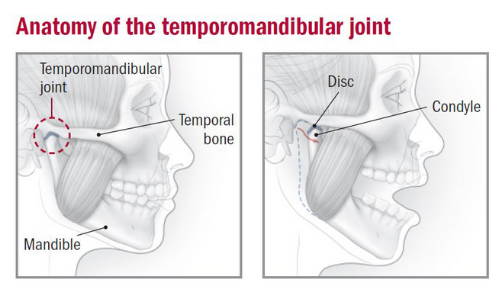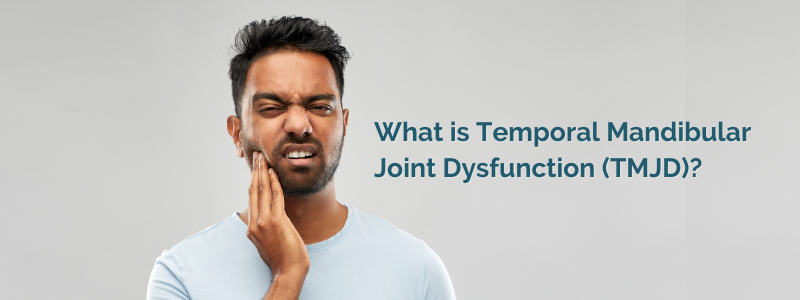We see many patients every year for jaw pain. But this year there has been an increasing number of patients with this issue. This is likely a correlational effect from the added stress and tension we all are experiencing as a result of the pandemic.
Grinding of teeth, clenching of the jaw and constant tension in the face and mouth muscles can lead to difficulty chewing, speaking, as well as ear pain.
What is the temporal mandibular joint (TMJ)?
The temporal mandibular joint is a bilateral hinge joint on both sides of the face just below the ears which connects your mandible (jawbone) to your temporal bone (skull).
Even though there are two separate joints, on each side of the face, these joints function as one unit. There is no independent movement of these two joints. For example, both of your temporal mandibular joints work together for your jaw to function properly. These joints move the jaw up and down, side to side, and allows you to eat, speak and yawn.

Why does temporal mandibular joint dysfunction (TMJD) occur?
TMJD is most typically a problem with the mastication muscles (those that move the jaw) and the temporal-mandibular joints (that connect the jaw to the skull). There can also be involvement of the small disc between the ball and socket joint. TMJD symptoms may be constant or limited to when there is motion involved in the joint, such as eating, yawning, and even speaking.
How do I know if I have TMJD?
The most common symptoms of TMJD are:
- Pain in the jaw, face or neck
- Popping, clicking or locking of the jaw
- Headaches, earaches
- Difficulty opening the mouth or chewing
- Upper and lower teeth don’t align correctly
- Jaw tenderness
Although there are many muscles in the neck and face that are involved in the proper movement of the TMJ, there are five muscles that are major contributors to this dysfunction. This includes:
- Digastric muscle is located under the jaw and is involved in any movement of the jaw such as speaking, swallowing, chewing and even breathing
- Masseter muscle is located just below the posterior part of the cheek bone and its primary function is to elevate the jaw and close the mouth.
- Pterygoid muscles (medial and lateral) primary function is to move the mandible at the temporomandibular joint which means they assist with opening and closing the mouth
- Temporalis muscle assists in elevating and retracting the jaw
- Sternocleidomastoid (SCM) is a muscle located on both sides of the front of the neck and when tight and shortened can cause pain into the jaw area.

How to treat TMJD
There are many treatment options to address TMJD including:
- Active Release Therapy addresses the scar tissue in the involved muscles.
- Massage Therapy works to relax the muscle and soft tissue in order to have them functioning properly.
- Acupuncture has also been shown to help relax and reduce muscle spasms.
- Seeing your dentist is also recommended to see if a mouth guard along with the manual treatment would resolve the TMJD more effectively.
At Movement Performance & Health, we use a team approach to address the issues of TMJD including working directly with dentists so you get the best results.
ABOUT MPH
HOURS OF OPERATION
Mon: 7AM - 7PMTues: 7AM - 7PM
Wed: 7AM - 8PM
Thurs: 7AM - 7PM
Fri: 7AM - 5PM
Sat: 7AM - 2PM
Sun: 10AM - 3PM
Copyright © 2023 Movement Performance & Health. All rights reserved.


